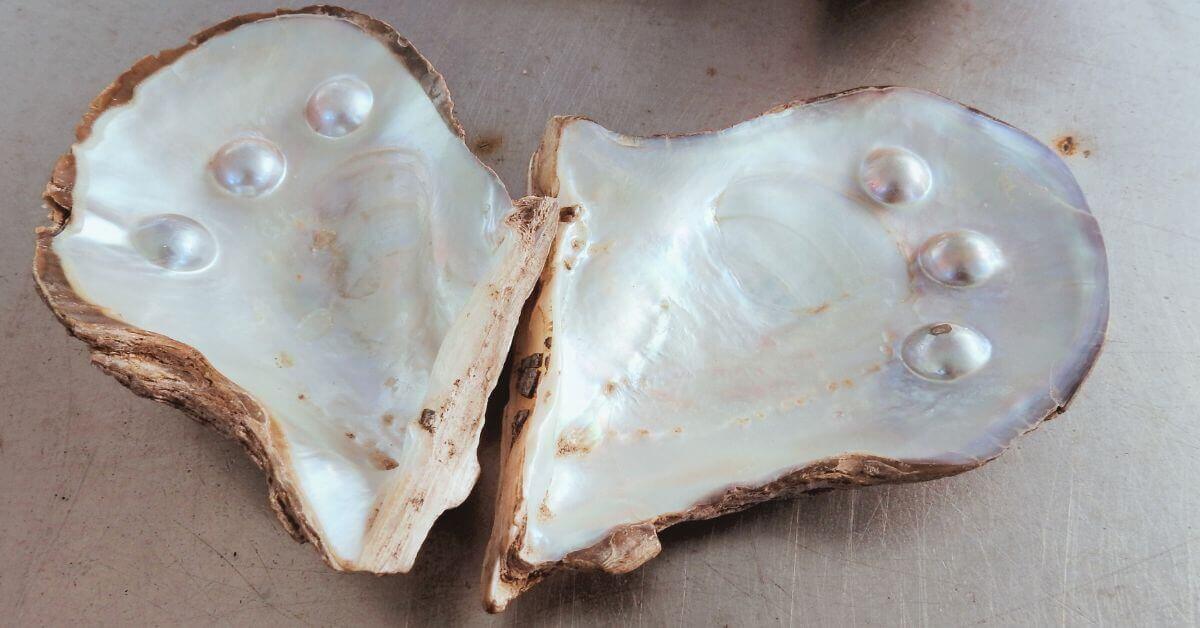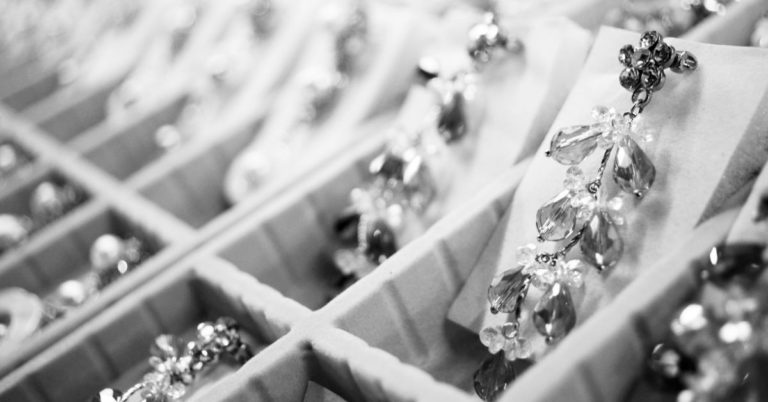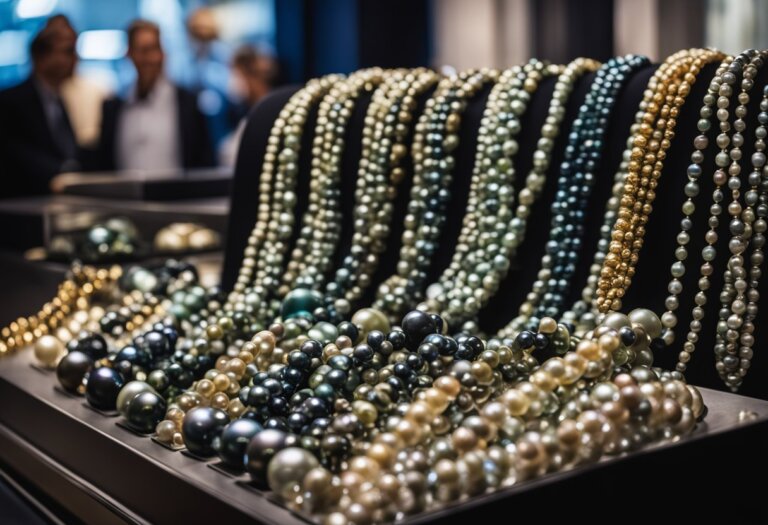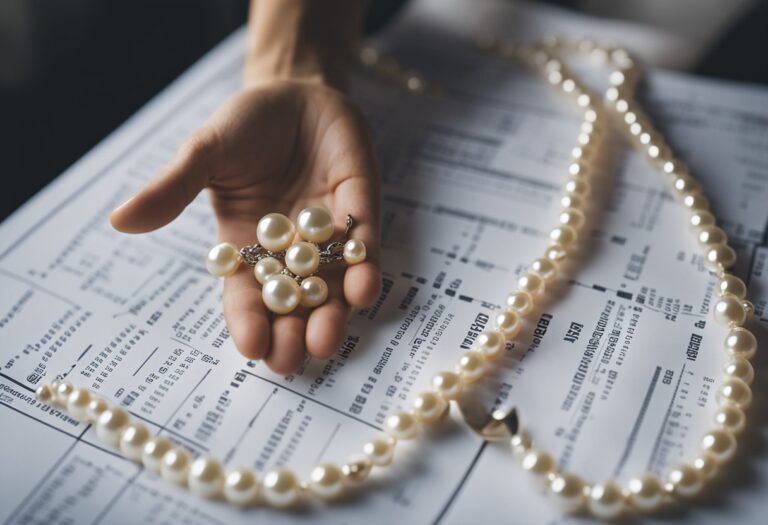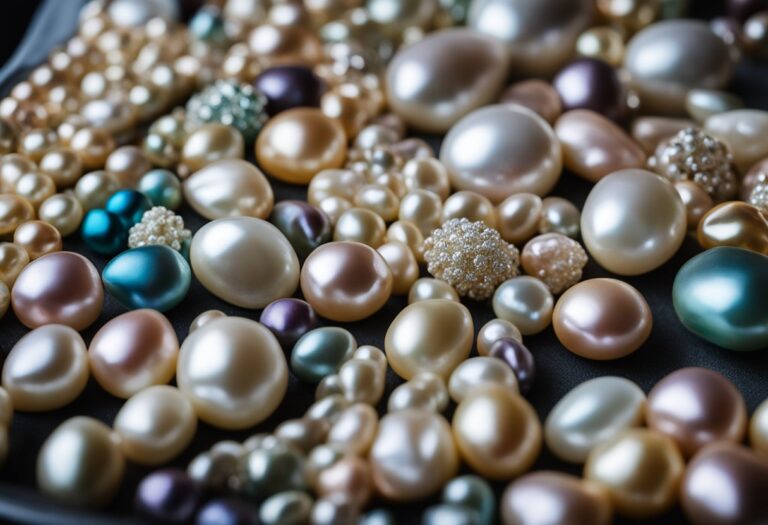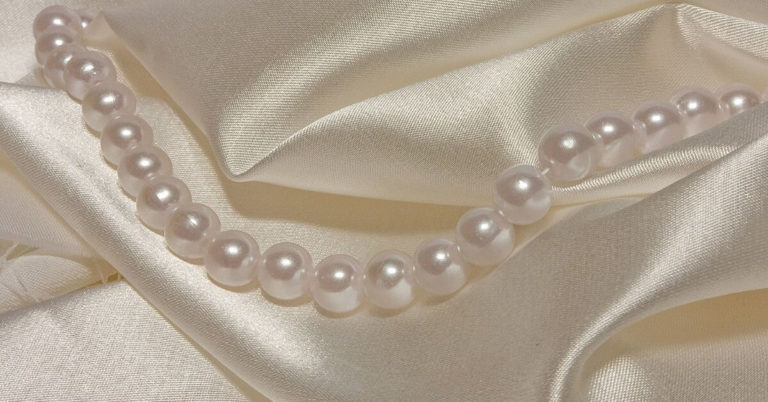Blister Pearls: Enchanting Mabe Pearl from the Ocean
Blister Pearls is a fascinating gem, special type of pearl that has captured the hearts of jewelry enthusiasts for centuries.
These pearls have an unique secret behind their exquisite luster. With passion and enthusiasm, let’s dive into the depths of the ocean and explore the captivating beauty of Blister Pearls.
What are Blister Pearls?
Blister Pearls, also known as half-pearls, are a rare and mesmerizing type of pearl that emerges from inside mollusks. Unlike traditional pearls, Blister Pearls develop on the inner surface of a mollusk’s shell.
These pearls are characterized by their hemispherical dome shape, which sets them apart from the more common spherical pearls. The captivating luster and delicate play of surface color, known as orient, make Blister Pearls a sought-after gem in the world of jewelry.
Where Do Blister Pearls Come From?
Blister Pearls are cultivated from mollusks, particularly oysters from the genus Pinctada. The cultivation process begins with the attachment of a small nucleus, often made of mother-of-pearl, to the inner shell of the mollusk.
Over time, the mollusk secretes layers of nacre around the nucleus, creating a beautiful Blister Pearl.
Different species of oysters, such as Pteria Sterna or Pinctada Maxima, are preferred for their unique size and luster, making them ideal for cultivating Blister Pearls.
How are Blister Pearls Made?
The cultivation of Blister Pearls involves meticulous care and patience. Oyster farmers carefully introduce a nucleus or irritant into the mollusk’s shell, prompting it to secrete nacre to “mend” the area.
As the layers of nacre build up, the Blister Pearl gradually forms its characteristic dome shape. The process can take several years, ensuring that each Blister Pearl attains its full potential of beauty and luster.
Are Blister Pearls Real Pearls?
Blister Pearls are indeed real pearls, just like the more common spherical pearls. The term “blister” refers to their unique formation within the mollusk’s shell.
These pearls are highly valued in the jewelry market for their rarity, enchanting appearance, and exquisite craftsmanship.
How Can You Tell if a Blister Pearl is Real?
Spotting a genuine Blister Pearl requires a keen eye and some knowledge about their characteristics. Here are some tips to help you identify real Blister Pearls:
- Visual Inspection: Genuine Blister Pearls exhibit a hemispherical dome shape and a lustrous surface with a delicate play of colors.
- Professional Assessment: Seek the expertise of a reputable jeweler or gemologist who can authenticate the origin and cultivation of the Blister Pearl.
- Certification: Look for certifications from gemological laboratories that provide valuable information about the authenticity and quality of the Blister Pearl.
Difference Between Blister Pearls and Typical Pearls
Blister Pearls and typical spherical pearls are both exquisite gemstones formed inside mollusks, but they differ significantly in their formation and appearance.
Understanding these distinctions will help you appreciate the unique allure of Blister Pearls. Let’s explore the differences between these two fascinating types of pearls:
1. Formation
- Blister Pearls: Blister Pearls develop on the inner surface of a mollusk’s shell. They are formed when a nucleus or irritant is introduced into the shell, prompting the mollusk to secrete layers of nacre around it. Over time, the nacre accumulates, resulting in a hemispherical dome-shaped pearl.
- Typical Pearls: Traditional spherical pearls are formed when an irritant, such as a grain of sand or parasite, enters the mollusk’s shell. In response, the mollusk coats the irritant with layers of nacre to create a smooth, spherical pearl.
2. Shape
- Blister Pearls: Blister Pearls are characterized by their unique hemispherical dome shape, which sets them apart from typical spherical pearls.
- Typical Pearls: Spherical pearls have a classic round shape, making them a timeless and popular choice in jewelry.
3. Cultivation Techniques
- Blister Pearls: The cultivation of Blister Pearls involves attaching a nucleus to the inner shell of the mollusk, encouraging the growth of nacre around it.
- Typical Pearls: Traditional spherical pearls can be cultivated using a similar technique, but they may also form naturally without human intervention.
4. Luster and Appearance
- Blister Pearls: Blister Pearls possess a captivating luster and a delicate play of colors known as orient. Their unique dome shape enhances their surface reflection, creating a mesmerizing visual effect.
- Typical Pearls: Spherical pearls also exhibit a beautiful luster, but their round shape offers a different kind of brilliance.
5. Rarity
- Blister Pearls: Blister Pearls are relatively rare compared to typical spherical pearls, making them a prized gem for collectors and enthusiasts.
- Typical Pearls: Spherical pearls can vary in rarity, with natural pearls being exceptionally scarce and cultured pearls being more readily available.
6. Jewelry Applications
- Blister Pearls: Blister Pearls are often used in jewelry designs that showcase their unique shape, such as pendant necklaces and brooches. Their distinctive appearance adds an artistic touch to any piece.
- Typical Pearls: Spherical pearls are versatile and commonly used in various jewelry items, including necklaces, earrings, bracelets, and rings.
Are Blister Pearls Expensive?
The value of Blister Pearls varies depending on various factors, including size, luster, shape, and overall quality. As with all natural gems, the rarity of exquisite Blister Pearls contributes to their higher price range compared to more common pearls.
However, the allure and timeless elegance of these gems make them a worthy investment for passionate jewelry connoisseurs.
How Do You Clean Blister Pearls?
Caring for Blister Pearls is essential to maintain their brilliance and longevity. Here are some tips for cleaning and preserving your precious Blister Pearls:
- Gentle Cleaning: Use a soft, damp cloth to wipe the surface of the pearls, avoiding contact with chemicals, lotions, or rough stones.
- Proper Storage: Keep your Blister Pearls separate from other jewelry to prevent scratches. Use pouches made of natural breathing fibers, such as silk or cotton, to protect them when not in use.
- Avoid Chemicals: Steer clear of exposing your Blister Pearls to harsh chemicals, such as chlorine bleach, perfumes, oils, or hairspray, as they can damage the delicate nacre.
Blister Pearls Are True Beauty
Blister Pearls are truly captivating gems that have fascinated humanity for centuries. Their unique formation within mollusks and exquisite luster make them a rare and cherished addition to any jewelry collection.
From the depths of the ocean to the delicate craftsmanship of oyster farmers, Blister Pearls enchant us with their beauty and elegance.
As you explore the world of Blister Pearls, remember to care for these precious gems with the utmost attention, so they continue to shine brightly and enchant generations to come.
Embrace the timeless allure of Blister Pearls and let them adorn your life with their shimmering beauty.
Frequently Asked Questions (FAQ) on Blister Pearls
What is a Mabe pearl?
A mabe pearl is a type of cultured blister pearl that is grown on the inside of the oyster’s shell. It is usually shaped like a dome and has a flat back. Mabe pearls are highly valued for their unique shape and lustrous appearance.
What is a natural blister pearl?
A natural blister pearl is a pearl that forms when an irritant, such as a parasite or piece of debris, becomes trapped between the oyster’s shell and its mantle. Over time, the oyster’s mantle secretes layers of nacre around the irritant, forming a blister-like pearl.
What is the difference between a natural pearl and a cultured pearl?
A natural pearl is formed without any human intervention, while a cultured pearl is formed when an irritant is intentionally inserted into the oyster or mollusk by a pearl farmer.
Can I use a blister pearl to make a pendant or a brooch?
Yes, blister pearls can be used to create stunning pendants and brooches. The unique shape and lustrous surface of blister pearls make them a popular choice for jewelry designers.
What is an abalone blister pearl?
An abalone blister pearl is a type of blister pearl that is formed inside the shell of an abalone. It has a beautiful iridescent surface and is highly prized for its unique colors and patterns.
Can I find silver blister pearls?
Yes, silver blister pearls are available. These pearls have a silvery-white color and are often used to create elegant and sophisticated jewelry pieces.
How can I wear a blister pearl pendant necklace?
A blister pearl pendant necklace can be worn as a statement piece or as a versatile accessory that can be paired with various outfits. Simply thread the pendant onto a necklace chain, and you’re ready to go!
Are blister pearls used in earrings?
Yes, blister pearls are commonly used in earrings. They can be set in various earring styles, such as studs, dangles, or hoops, to create unique and eye-catching earrings.
Can I find vintage or antique blister pearls?
Yes, it is possible to find vintage or antique blister pearls. These pearls have a unique charm and are sought after by collectors and enthusiasts.
What is the size of a typical blister pearl?
The size of a blister pearl can vary, but they are often found in the range of 10mm to 15mm in diameter. However, blister pearls can be larger or smaller depending on their specific growth conditions.
- Freshwater Pearl Symbolism and Spiritual Meaning: Unveiling Mystical Associations
- How to Choose The Best Earrings for Your Face Shape (with Pictures and Celebrities)
- Earrings Styles: Popular Types of Earrings with Pictures
- Freshwater Pearl vs Cultured Pearl: Unraveling the Mysteries
- Cultured Pearls: Real and Elegant Gem At Affordable Price

